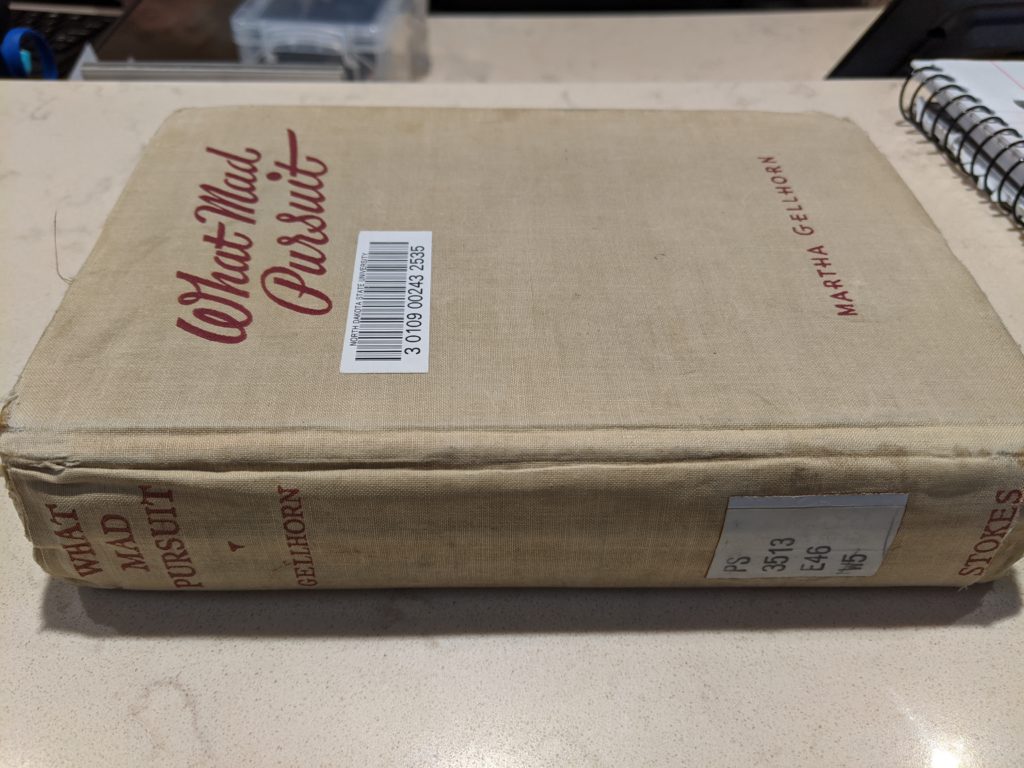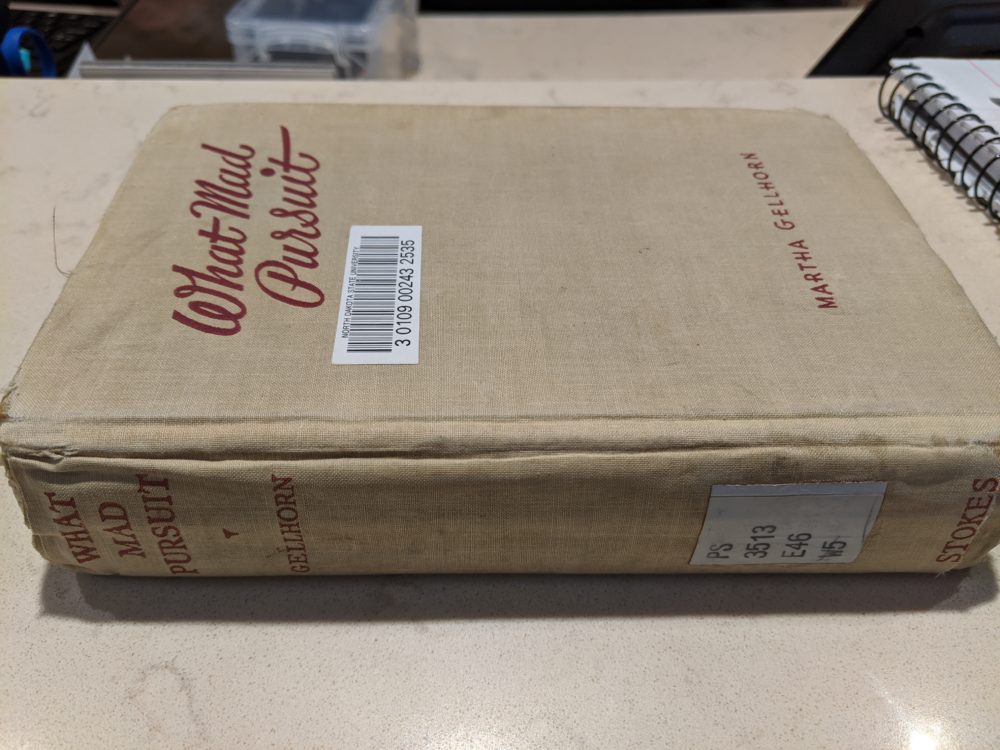
NDSU’s first edition copy of ‘What Mad Pursuit’ published in 1934 by Martha Gellhorn.
The story of Martha Gellhorn: The only woman on the shore’s of Normandy on D-Day
“What Mad Pursuit” by Martha Gellhorn is just one of the rare books NDSU library has in its collection. With a neutral cover and pages suffering from “brittle book syndrome,” this is a book students undoubtedly walked past without a second glance.
After digging deeper into who Martha Gellhorn is and the story of this published work, the library staff have discovered that this book is a hidden gem. Martha Gellhorn is considered to be “one of the great war correspondents of the 20th century.”
With only a single edition published in 1934, when Martha Gellhorn was only 25, and only a few remaining today, “What Mad Pursuit” is an artifact of her time as a fiction writer.
“I was in Dachau when the German armies surrendered unconditionally to the Allies. We sat in that room, in that accursed cemetery prison, and no one had anything more to say.”
-Martha Gellhorn
After having “What Mad Pursuit” and a collection of short stories published, Martha moved to Paris to be a foreign correspondent for the United Press. After getting fired for reporting sexual harassment, she then moved back to the United States and worked for the Federal Emergency Relief Organization and was tasked with traveling around the U.S., reporting the effects of the Depression.
Eleanor Roosevelt, the first lady of the United States was also a fan of her reporting and had her live at the White House and assist her with correspondence.
In 1936, after publishing a work titled “The trouble I’ve Seen,” which detailed stories about the Depression, Martha met Ernest Hemingway in Florida. After getting married to Hemingway in 1940, Martha Gellhorn heard the call of war and followed her work to Europe to report on the rise of Hitler.
It was then at this point, Hemingway famously sent her a telegram that said: “Are you a war correspondent or wife in my bed?” Clearly, she saw herself as a war correspondent.
In the summer of 1944, with their marriage on the verge of ending, Martha stowed away on a vessel headed toward the allied invasion of Northern France, famously known as D-day. Martha was the only woman on the shores of Normandy that fateful day, surrounded by 156,000 allied troops and then went on to report the moment allied troops liberated Dachau Concentration Camp.
Martha divorced Hemingway on Dec. 21, 1945. Her war reporting continued and because of her bravery, she changed the then, narrow-viewed perception of female journalists.
Her entire life was filled with gutsy-adventure and it’s incredible that NDSU has a copy of her early published work, that has yet to be digitized.
